Preface
As the world's first peripheral polymer-coated sustained-release stent, the Boston Scientific Eluvia™ nickel-titanium alloy paclitaxel-eluting vascular stent has a one-year patency rate of 92.1% and a two-year one-stage patency rate of 82%, with a statistically significant reduction in the two-year clinically-driven target lesion revascularization rate (CD-TLR) of 12.75% vs. 20.15% compared with other drug-coated stents (p=0.0495). Eluvia's characteristics of "excellent slow release, stable support, high patency" create the E+ lower extremity arterial total solution, and its excellent efficacy brings a new gospel to PAD patients!
Today, we share with you a case of Eluvia applied to severe calcification of the common femoral artery brought by Prof. Peng Liu's team from China-Japan Friendship Hospital. This case involves multiple arteries of the right ilium, common femoral artery, superficial femoral artery, etc. For this kind of complex lower limb arterial lesions with severe stenosis of long segments, the opening of the lower limb arteries by simple interventional methods is time-consuming and difficult, and the use of hybridization surgery can avoid the complex access and go straight to the lesion site, while avoiding complicated surgery and reducing trauma. The hybridization procedure avoids complex surgery, reduces trauma, and simplifies the process. Eluvia's unique polymer-coated drug-release mechanism and excellent stenting platform make it an optimal choice for the treatment of these lesions. We welcome you to read, share and discuss!
I. Status of cases
Sex:Female
Age:65
Complaint:intermittent claudication of the right lower limb for 4 years.
Examination:right femoral artery, popliteal artery pulsation is weakened, right dorsalis pedis artery is not palpable.
Past medical history:hypertension, diabetes mellitus, lumbar spine surgery.
Preoperative imaging:
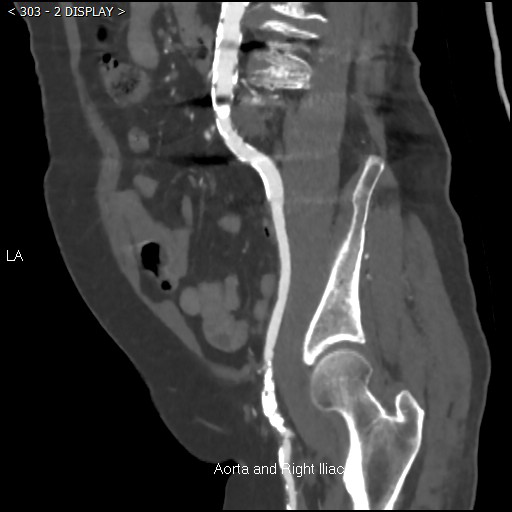
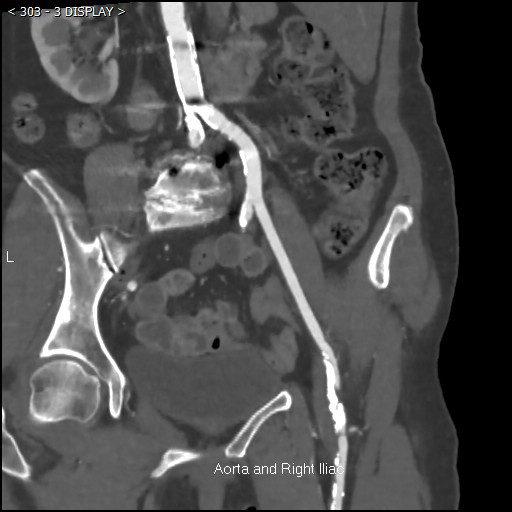
Preoperative imaging findings:moderate-to-severe stenosis of the right iliac artery, moderate-to-severe stenosis of the right common femoral and superficial femoral arteries
II. Characteristics of the cases
Bifurcation lesion of the common femoral artery with severe calcification.
III. Treatment Programs and Development of Strategies
Hybridization surgery, common femoral artery endothelial stripping preparation for artificial vascular interposition
Combined iliac and superficial femoral artery intervention
IV. Proposed use of surgical instruments and drugs
Femoral artery
Vascular patches, artificial blood vessels
Iliac artery
Balloon P3 4/5/6/8mm
Bracket SMART CONTRAL 8mm×60mm
VIABHAN 8mm×50mm
Superficial femoral artery
ELUVIA drug holder 6mm×80mm
Balloon as before
V. Surgical procedures
1、Positioning of the patient: lying down position, hip joint externally rotated and abducted.
2. Access: right femoral artery dissection
3. Preoperative imaging: 50% stenosis of the right common iliac opening, stenosis of the lumen of the common femoral artery, severe calcification, superficial proximal femoral stenosis, and superficial distal femoral stenosis.
4、Special intraoperative requirements: None
5. Surgical procedure: right inguinal incision, free common femoral artery, common femoral artery, superficial femoral artery, deep femoral artery were controlled by a blocking band, severe calcification of the vessel, from the common femoral artery to the proximal superficial femoral artery, longitudinal incision of the common femoral artery, stripping the diseased plaque, opening the proximal end, with a good return of blood, the proximal end of the vascular sheath was placed, the contrast showed that the common iliac artery stenosis of 50%, not to be dealt with for the time being, and the distal end of the sheath was placed, and contrast showed that the superficial femoral artery was normal, the middle and popliteal arteries were normal. The middle part of superficial femoral artery and popliteal artery are normal, the sheath is withdrawn, and the femoral artery is shaped with artificial patch, the sheath is withdrawn before suture is completed, and the guidewire is inserted to pass the Eluvia™ drug-coated stent (6mm×80mm), so that the stent can cover the stenotic lesion in the superficial proximal femoral artery and fix the endothelium in the distal part of the superficial femoral artery after debridement, and the remaining 50% stenosis in the proximal part is released, and the balloon is used to carry out posterior dilatation, and then the stenosis is imaged again, and the sheath is withdrawn and suture is completed. The sheath was withdrawn and the suture was completed.
6. Postoperative imaging: the right common femoral artery was patent without residual stenosis, and there was no residual stenosis in the proximal right superficial femoral artery.
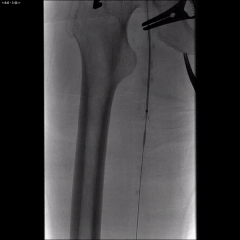
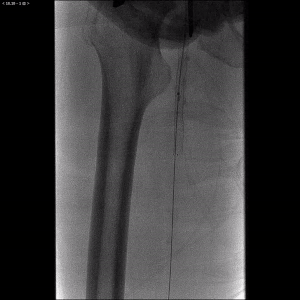

7. Removal image
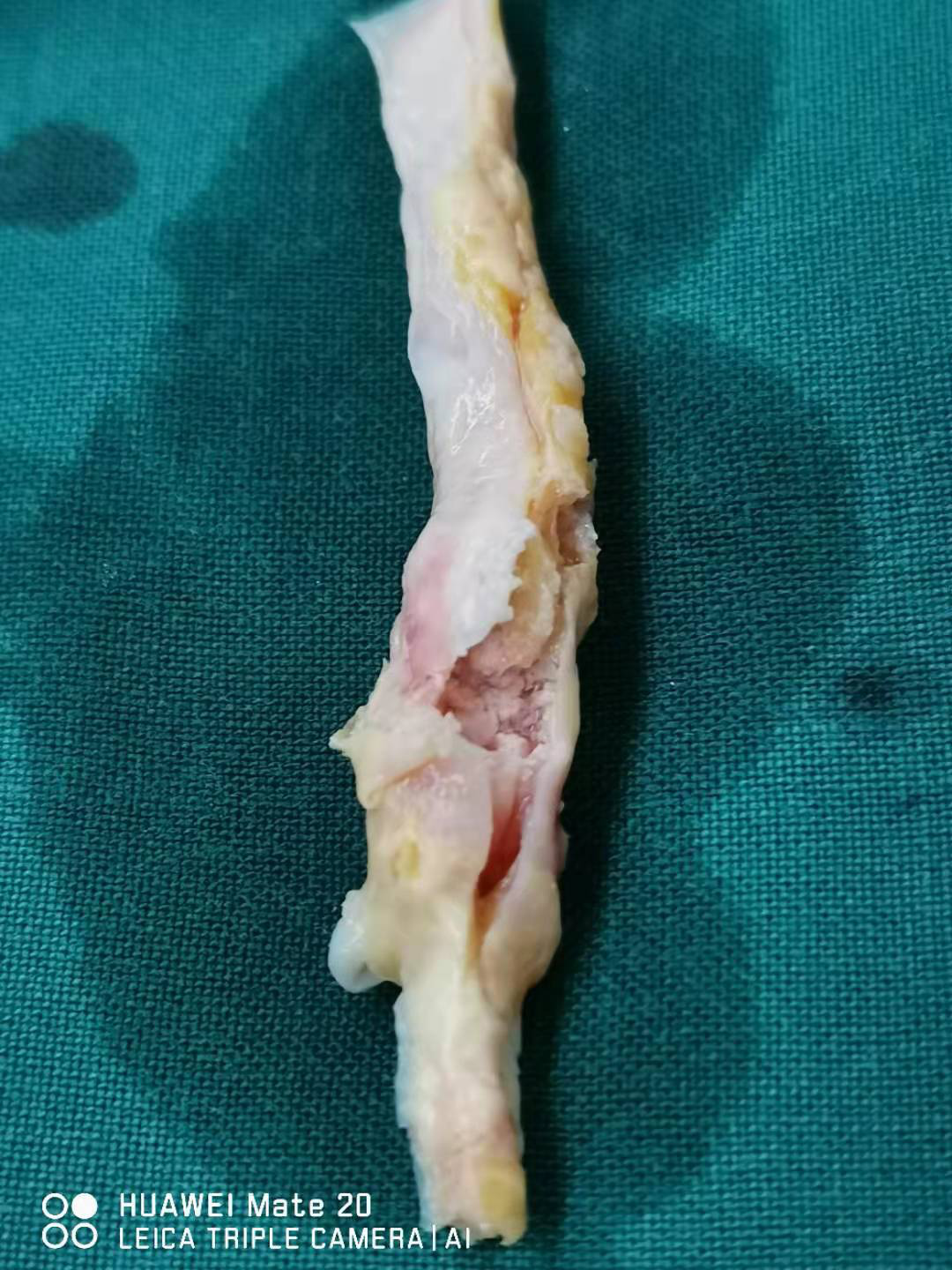
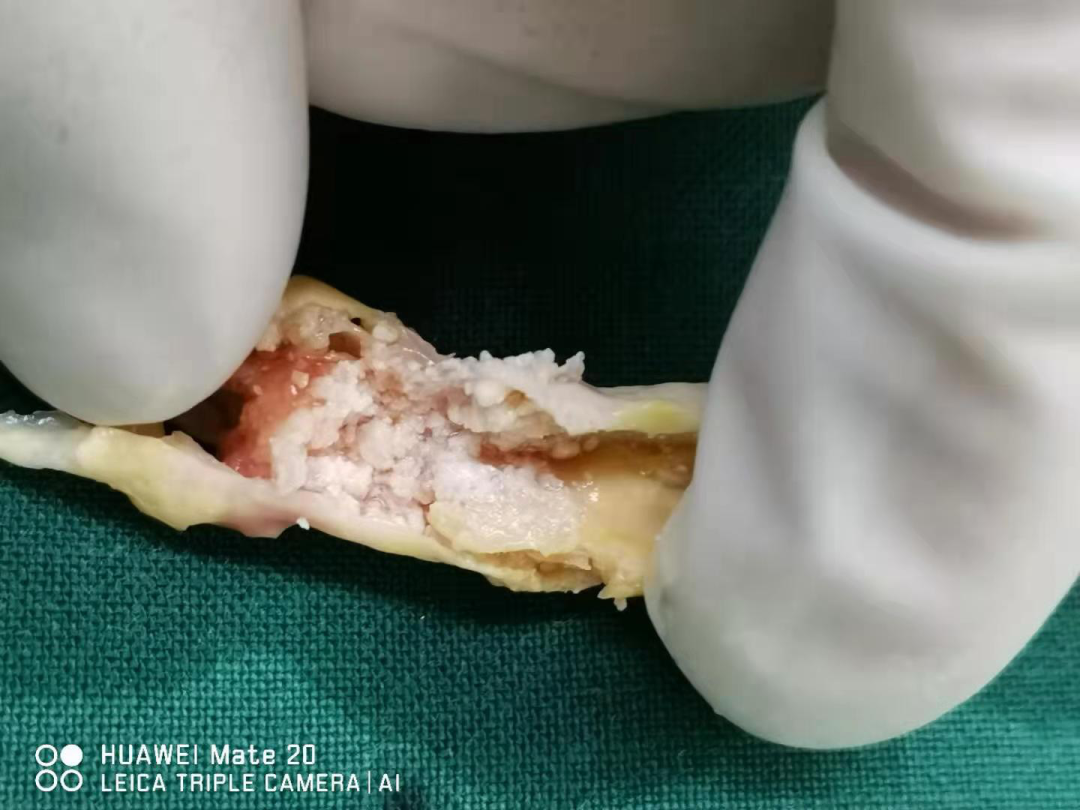
VI. Follow-up needs and medical advice
Postoperative dual antiplatelet therapy
Review ABI and vascular ultrasound at six months
VII. Surgical summary
Hybridization is ideal for lesions involving the bifurcation of the common femoral artery, which can adequately protect the deep femoral artery and also avoid transarticular stenting. The possibility of severe calcification that prevents endothelial stripping should be considered preoperatively, and artificial vessels should be prepared for backup. The scope of endothelial stripping is limited, and when the distal lesion cannot be completely treated, residual stenosis and endothelial sheet immobilization can be used to assist stenting at the same time.
Curriculum Vitae

Prof. Peng Liu
Vice President and Director of Medical Affairs Department of China-Japan Friendship Hospital, Director of National Center for Integrative Cardiology, Director of Cardiac-Vascular Surgery. Chief Physician, Professor, Doctoral Supervisor. Expert of National Science and Technology Award. Expert of Central Healthcare Consultation. He is a "Bai Qiu'en type good doctor", winner of China Physician Award and Capital Spiritual Civilization Construction Award, a young and middle-aged expert with outstanding contribution to national health planning, an excellent communist party member, and enjoys the State Council Government Special Allowance.
He is the deputy director of the Department of Cardiovascular Surgery of Peking University, deputy director of the Clinical Diagnosis and Treatment and Research Center of Lower Extremity Atherosclerosis and Occlusive Disease of Capital University of Medical Sciences, and the medical supervisor of the "Medical-Industrial Intersection Experimental Class" of the School of Biological and Medical Engineering of Beijing University of Aeronautics and Astronautics. He is the deputy editor-in-chief of Journal of Vascular and Endovascular Surgery, executive editorial board member of Chinese Journal of Cardiovascular Disease Research, and corresponding editorial board member of Chinese Journal of Thoracic and Cardiovascular Surgery. Every year, he hosts 4 national continuing education programs, and has received more than 10 scientific research funds from the Ministry of Science and Technology, National Nature and the Ministry of Health. In recent years, he has published more than 20 SCI papers, and has edited 5 monographs on vascular surgery.

Prof. Zhidong Ye
Deputy Director of Cardiovascular Surgery, China-Japan Friendship Hospital, Chief Physician, Associate Professor, Master's Degree Tutor of Peking University and Beijing University of Aeronautics and Astronautics, Chairman of the Youth Committee of the First International Vascular Alliance China Chapter; Chairman of the Specialized Committee on Hemodialysis Access of the International Vascular Alliance China Chapter; Vice Chairman of the Specialized Committee on Vascular Surgery of the China Society for the Promotion of Science and Technology of Human Health; Vice Chairman of the Specialized Committee on Vascular Obstruction Disease of the Chinese Physicians Association Vice Chairman of the Vena Cava Obstruction Disease Committee of the Chinese Physicians Association; Vice Chairman of the Carotid Artery Expert Committee and Vascular Access Expert Committee of the Peripheral Vascular Disease Committee of the Chinese Society of Integrative Medicine; Standing Member of the Cardiothoracic Surgery Committee of the Integrative Medicine Branch of the Chinese Physicians Association; Vice Chairman of the Hemodialysis Access Committee of the Beijing Physicians Association; Standing Director of the Vascular Surgery Specialists' Sub-Committee of the Beijing Physicians Association, etc. AVS Journal, etc. He is an expert in reviewing the manuscripts of AVS Journal, an editorial board member of Chinese Journal of Vascular Surgery and other core journals, and an expert in technical appraisal of medical accidents of the Chinese Medical Association.
Team Introduction
Liu Peng's team at China-Japan Friendship Hospital is a team that takes care of both cardiac and peripheral vascular diseases. Skilled in surgical and interventional techniques, Liu Peng has extensive experience in peripheral vascular hybridization surgery, carotid artery surgery, coronary artery bypass grafting simultaneous carotid artery surgery, pulmonary artery endarterectomy, varicose veins, and hemodialysis access surgery, which is at the leading level in China.


